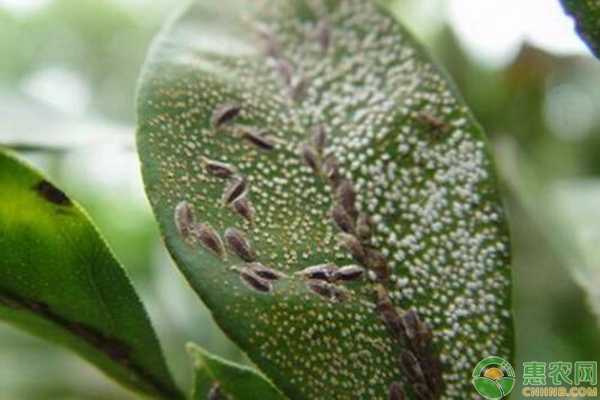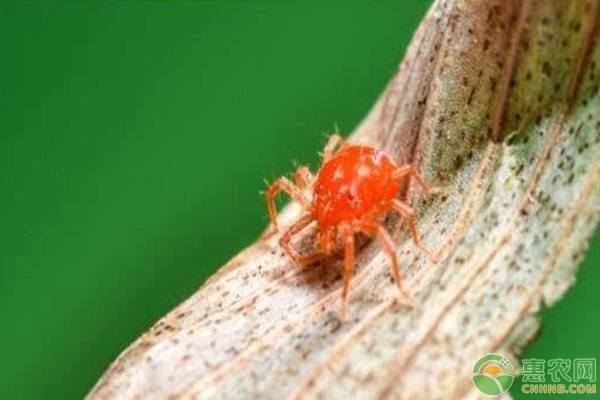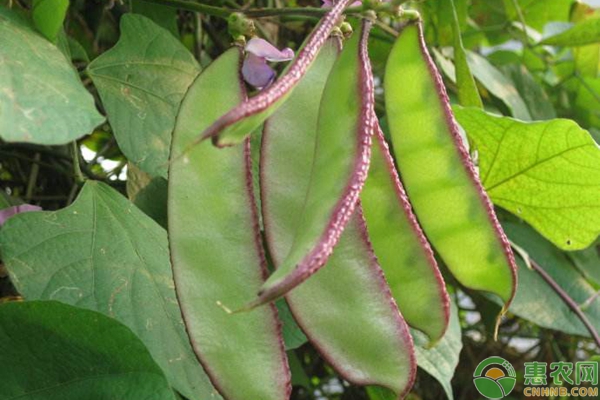Insects are closely related to agricultural production. The following Huinong network edits nine crops of agricultural insects: Orthoptera, Thysanoptera, Homoptera, Hemiptera, Hymenoptera, Lepidoptera, Coleoptera, Hymenoptera , Diptera. The following is a brief description of these items and important subjects, and lists some common agricultural insects. 1. Orthoptera It includes common insects such as mites, mites, muse and cockroaches. Large or medium-sized, chewing mouthparts. The fore wing is long and slightly hardened, and the hind wings are membranous; some species are short-winged and even wingless, and some species are extremely flying and can fly long distances. The back foot is strong and suitable for jumping. Aphisidae: East Asian locust, cloud locomotive; Spotted scorpionidae: Chinese rice blast, Japanese yellow ridge; è¼è›„科: Single hedgehog, oriental è¼è›„. 2, Thysanoptera Mainly Hummer. The body is tiny, generally yellowish brown or black, with developed eyes and long antennae. The sucking mouthparts are of pterygium and have a dense and long braided hair. 蓟马科: Insect horse, smoky horse, greenhouse hummer; Guan Maike: rice tube Hummer, Mai Jianhua Hummer. 3. Homoptera Thistle is the cockroach, leafhopper, planthopper, hibiscus, whitefly, aphid and scale insect. Mostly small insects, sucking mouthparts, the base of which is born behind the ventral surface of the head, as if from the forefoot base. The winged species are membranous and have a ridge-like shape on the back of the body at rest. Many species of females are wingless, and scale insects and aphids often have wingless types. Leafhoppers and aphids can also transmit plant virus diseases. . Whitefly family: greenhouse whitefly; Leafhopper: black-tailed spider mites, big green leafhopper, cotton leafhopper; Wax family: spotted wax mites; Phyllostachys pubescens: brown planthopper, white-backed planthopper, gray planthopper, and sugarcane Polygonaceae: cotton aphid, wheat bifurcation, wheat long tube, peach aphid, sorghum, radish 蚧科科: Blowing 蚧; Shield family: mulberry scorpion, scorpion shield scorpion, pear round scorpion; Wax family: white wax insect, red wax wax, Korean ball firm; 4, Hemiptera Mainly cockroaches. Most of the body is broad and flat, the front wing is half leathery, the end half is membranous, called semi-coleoptera; the sucking mouthparts, the nymph has a scent gland in the abdomen, so it has the name of "bug" and "after". Nets: Pear nets, banana nets; Cymbidium: fine-flowered flower buds, tiny flower buds; è½ç§‘: Needle è½, rice spider è½; Polygonaceae: rice brown trout, rice black trout, rice green alfalfa. Aphididae: a green blind, a blind, and a black blind; 5, Hymenoptera Often referred to as "蛉"; under the mouth, chewing mouthparts. Predation of carnivorous beneficial insects such as aphids and butterfly moth larvae. Grasshoppers: big grasshoppers, grasshoppers, Chinese grasshoppers; 6, Lepidoptera The second largest in the insect class. The biggest feature is that the wings are covered with small scales, and the adults are called moths or butterflies. The siphon-type mouthparts form long-shaped and can be rolled up; there are about 140,000 kinds of known, of which more than 90% are moths and less than 10% are butterflies. The antennae of the moth and the butterfly are swollen at the end of the antennae, while the moths are linear or pinnate; the wings are closed on the back when the butterfly rests, while the moth rests on the sides of the body or shrinks when resting. The ridges; most of the butterflies are active during the day, while the moths are mostly nocturnal, usually with strong phototaxis. Gypsophila: Moth, Moth; The genus Spodoptera: yellow thorn moth, brown thorn moth, flat thorn moth; Mothaceae: wheat moth, cotton bollworm, sweet potato moth; D. moth: Plutella xylostella; Capsule family: peach fruit moth (Peach small heartworm); Mothidae: Soybean, Heartworm, Apple Leaf Roller, Brown Leaf Moth, and Yellow Leaf Moth; 螟 科 : 二 二 二 二 二 二 : : : : : : : : : : : : : : : : : : : : : : : : : : : : : : : : Noctuidae: The species of the leaf are mucoid, Spodoptera litura, rice blast, cotton small bridge worm, beet armyworm; the foraging species are big cockroaches, cotton bollworms, and ding diamonds; the roots are small tigers. Earth tigers, yellow tigers, etc. Toxic moth: poisonous moth, gypsy moth; Sphingidae: Sweet potato hawk moth, Bean hawk moth; Nymphalidae: Straight-grained rice, butterfly, and herd of valleys; Swallowtail: citrus swallowtail, jade phoenix butterfly; Pieridae: Cabbage butterfly; Nymphalidae: ramie red butterfly, ramie yellow butterfly; 7. Coleoptera The first major order of the insect class, there are more than 300,000 species, accounting for 40% of the total number of insects. Known as the beetle, referred to as "A". The body is generally hard and shiny. The head is normal, and there is also a forward-shaped (the weevil), and the end is a chewing mouthpart. The anterior wing is keratinized and hard, called the coleoptera, without obvious wing veins. Turnipaceae: Bean Phthalocyanine; Carabidae: Venus's armor, wrinkle-sheathed armor, and wheat-starting armor; Phyllostachys pubescens: stag beetle (ditch needle worm), fine-chest stag beetle (acute echinoderma); Dermatology: variegated skin, black skin sputum; Gyrtunidae: Citrus small gibberella, Jinyuanji worm; Coccinellidae: beneficial insects include Australian ladybugs, wormed ladybugs, black ladybugs, and seven-spotted ladybugs; pests include potato ladybugs, eggplant twenty-eight-star ladybugs, etc.; Pseudo-stepping family: Tenebrio molitor, black mealworm, red-grained pirate, miscellaneous grain thief; Lijin Turtle: Tonglu Dijinjingui; 鳃金 tortoise: dark golden tortoise, North China black scorpion golden tortoise; Cerambycidae: Sang Tian Niu, Xing Tian Niu, Orange Brown Tianniu, Taohong Niu Tianniu; Leaf Ake: (also known as: Golden Flower worm) large leaf worm, small leaf worm, yellow squash, yellow curved stripe; Bean family: mung bean elephant, pea elephant, broad bean elephant; elephant family: corn elephant, rice elephant; 8, Hymenoptera It mainly includes various ants and bees. Chewing mouthparts, front and rear wings are connected by fin hooks. According to whether the base of the abdomen is contracted or thinned, it is divided into a broad-legged suborder (Apiaceae) and a thin-waist suborder (Iridae, Aphididae, Small Bee, Trichogramma, etc.). Leaf bee family: wheat leaf bee, pear bee; The genus Ignidae: the yellow-banded wasp, the worm, the white-spotted bee, the scorpion scorpion, the cotton bollworm, the stag beetle, and the black-spotted stag bee; 茧Bee: Chinese sturgeon, cockroach, cockroach, cockroach, cockroach, cockroach, bee, bee Small bee family: the majority of the legs of the bee; Golden bee family: black-green bee, pteridophyte; Trichogramma: Trichogramma, Trichogramma, Trichogramma, Trichogramma 9, Diptera It mainly includes mosquitoes, flies, and cockroaches. Sucking or sucking mouthparts. The fore wing membrane is developed and the hind wing is degenerated into a balance bar. 瘿Mosquito: wheat red worm, wheat yellow worm, rice blast; Fruit fly family: citrus fruit fly, melon flies; Scorpionidae: thin-waxed flies, black-banded scorpion flies; Lepidoptera: larvae, larvae, larvae; Yellow larvae: wheat stalk flies; Flower fly family: species fly, onion fly, radish fly; Fly family: Umbrella skirts to catch flies, corn scorpion flies, flyworms lack of flies. YT-H706 YT-H706 Shenzhen Sunshine Technology Co.,Ltd , https://www.szyatwin.com

